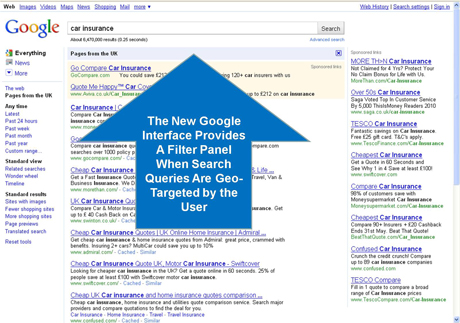The 10 Fundamental Laws of International Search Marketing
A primer on 10 critical factors in global search marketing -- from content, to keyword translation, to customer behavior, and much more.
A primer on 10 critical factors in global search marketing -- from content, to keyword translation, to customer behavior, and much more.
After nearly 14 years of working on SEO and PPC in international search marketing, the same patterns keep repeating themselves. Yes, we’re in a rapidly changing industry, but the same fundamental laws are at work in the background. In an effort to improve standards of performance in our great industry, let’s look at these 10 fundamental laws of international search marketing.
1. Content is Key to SEO, PPC, SMO
While it isn’t at all original to say “content is king,” consider how things work in international search marketing. Every organization works diligently to reduce the costs of content. That isn’t surprising, because if a website is in the typical 20 languages, just making one relatively minor change to the website can incur some significant cost.
We must stress that content is at the heart of everything we do — and that also includes paid search and social media marketing. The most common cause of failure: allowing customers working in other languages to receive second best.
In international search, the product is the content, and the content is the product. The product or service drives the content on the website. Many companies would do well to “localize” their product or service — and not just the words describing it.
2. Keywords Can’t be Translated
Keywords are not “words.” This is why they can’t be translated and why translators aren’t the right people to choose them or associate them with content.
Keywords are actually abbreviated thoughts that are created within the framework and rules of a particular language. There is no one-to-one relationship or connection between keywords in different languages. Think of keywords as “language codes” that represent a particular category or concept just in that one language.
3. Search-Trained Native-Speakers Must Nurture SEO, PPC, SMO
Automated translation and language tools are out as far as international search marketing is concerned. But by the same token, just become some individual speaks a mother-tongue version of Bulgarian doesn’t make them a great Bulgarian search marketer!
How many people do you know who truly understand search? Yet particularly big organizations allow relatively junior people without search marketing training to make critical decisions.
4. Best Practice Only Comes Through Centralization with Local Tentacles
Whether to do things locally or centrally is a big question for global search marketers. There are two reasons why search marketing must lean more towards the center and less towards to the local node:
The solution is to centralize, but to involve people locally, giving them influence — not control — over their search marketing activities.
5. Always Stand Next to Your Customer Virtually Through Geo-Targeting

While website management should rely on central controls, the delivery of the content should be as close to the customer as possible for several reasons, such as page loading speed, and ensuring that content ranks in the right geographic segments of search engines at the right time. The principal can be identified throughout many search marketing activities though.
6. Track Market Differences and Environmental Factors
Because users — or, better said, customers — are located in a market which isn’t the start point of the business by definition, account has to be taken to that market’s differences or environmental factors. A good step is to list the possible environmental factors that may affect the performance of your project in each local market, such as where the customers are located.
Customers in emerging markets are often based around big cities, which can directly affect your targeting and thinking. Logistics and delivery times for e-commerce companies are important factors too — and the methods of payment and payment systems are absolutely critical.
7. All Peoples are Equally Sophisticated, Impatient, and Lazy
The director of a U.S. search business once said at a conference that the reason they were launching their business in France was because the Europeans were unsophisticated at how they search. That’s not a good place to start.
First, the French see themselves as “French” first — and then European. On top of that, just because the customers in that market may not have all the facilities available to them in the U.K. or U.S. doesn’t mean they’re less sophisticated. Give users in any market the tools and they’ll stun you with their sophistication.
8. Trust is Built Through Cultural Relevance and Dealing with Environmental Factors
If you want your customers to buy or inquire through your website, they have to believe it’s worth their time to do so — and if they’re buying they won’t be ripped off or see poor quality products delivered. It’s stating the obvious, but this is much more significant when you’re choosing products and services from a web page that anyone could have created.
A good brand image helps a lot here. But for marketers moving into new international markets, good brand awareness often is neither a factor, nor is there a significant budget to move the dial on brand awareness by any significant amount.
The only way to win over customers, then, is to win their trust. This is what makes “about us” pages critical — especially because in many European markets “about us” page views are significant. That trust can also be delivered by identifying the environmental factors which concern the public in that market and tackling them head on by offering evidence, testimonials, guarantees, and additional relevant content that may not have been needed in the U.S. or U.K.
9. Language Drives Differences in Long Tail and Website Structure
The number of people who don’t realize that “language” is the key ingredient in international search is staggering. An English-speaking search marketer recently told me: “I haven’t done any international SEO yet, but I’m hoping to get the opportunity soon.” He went on to talk about local domains versus subdomains, and not once was the word ‘language’ even mentioned.
In more than a decade, this pattern has been repeated many times. Simply dealing properly with the language barrier unblocks every obstacle.
One specific element is the long tail of search. The majority of U.S.- and U.K.-based international search marketing is based around using translation and translators for every aspect of language, including keyword research and on-page optimization. That’s crazy.
There’s also a tendency to use large numbers of keywords for PPC campaigns in English and significantly smaller volumes in other target languages. That’s crazy, too.
10. Input Methods Drive Behavior — Including Mobile PC and Tablet
Something as ordinary and simple as a keyboard or an iPhone might be considered by many not to rank as a fundamental law. But so few people ever mention or think about it. In fact, in seven or eight years of speaking at conferences, I can’t recall anyone who actually mentioned it as a factor affecting search.
The keyboard layout isn’t ideal. After all, the qwerty and azerty layouts (each language has a different layout keyboard) were actually designed to slow typists down so that typewriters could cope and the keys wouldn’t continually be gnashing with each other.

Now consider the Mandarin and Cantonese Chinese languages with something over 40,000 recognized characters, of which 3,000 are needed to read a newspaper. Yet Chinese speakers use a traditional keyboard to input all of these characters into computers and therefore into search engines.
There are at least 15 different methods of inputting Chinese characters, each with their own quirks, and the typical number of keystrokes needed to create a character is somewhere between two and three. So, at least, Chinese speakers will tend towards the quickest and easiest characters to input. Understanding this will have a big impact on how you consider the usability of a web page (e.g., clicking a link rather than filling an input box may be a better solution).
There are many other nuances of international search, but most will fall into one of the above categories. Happy international search marketing!